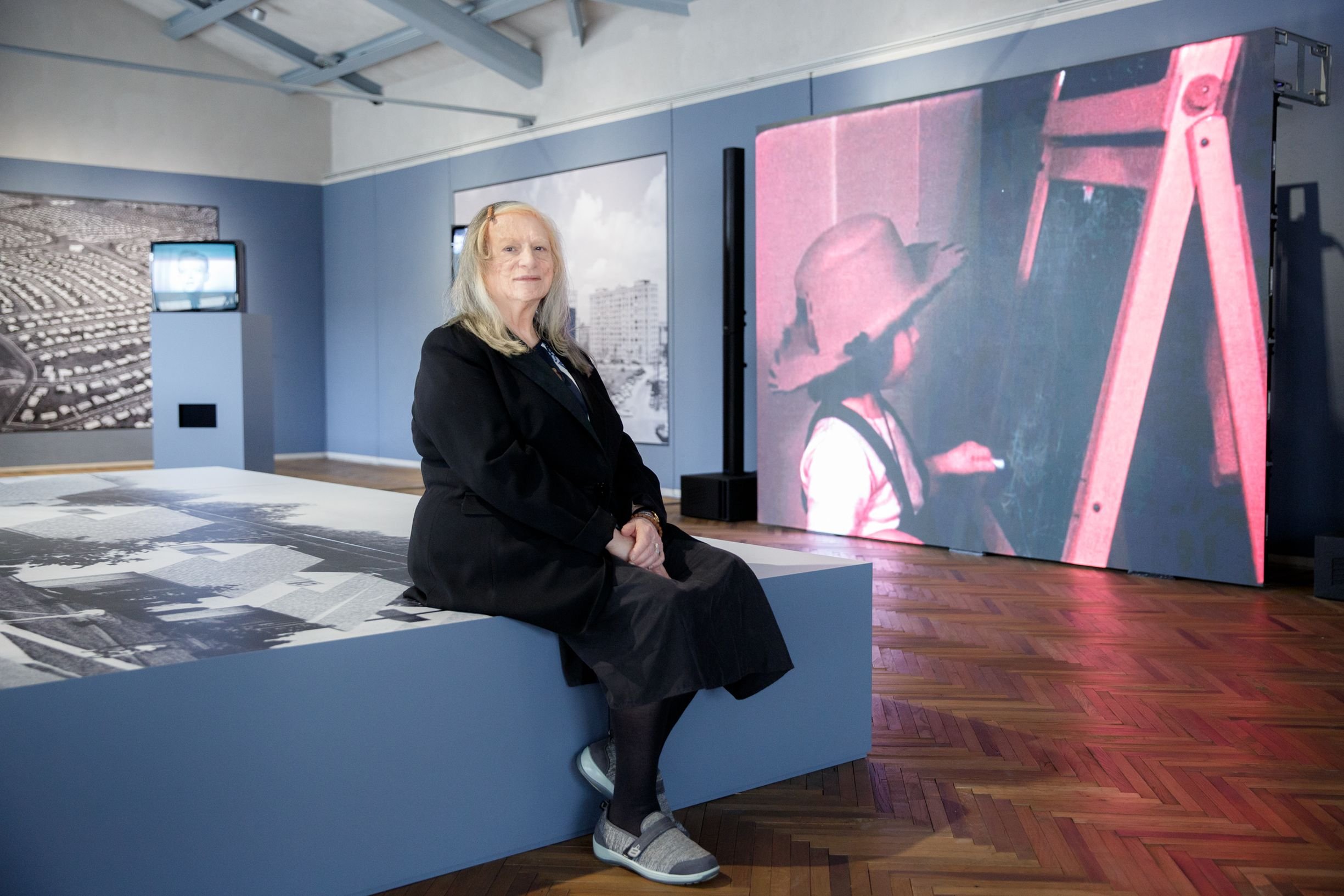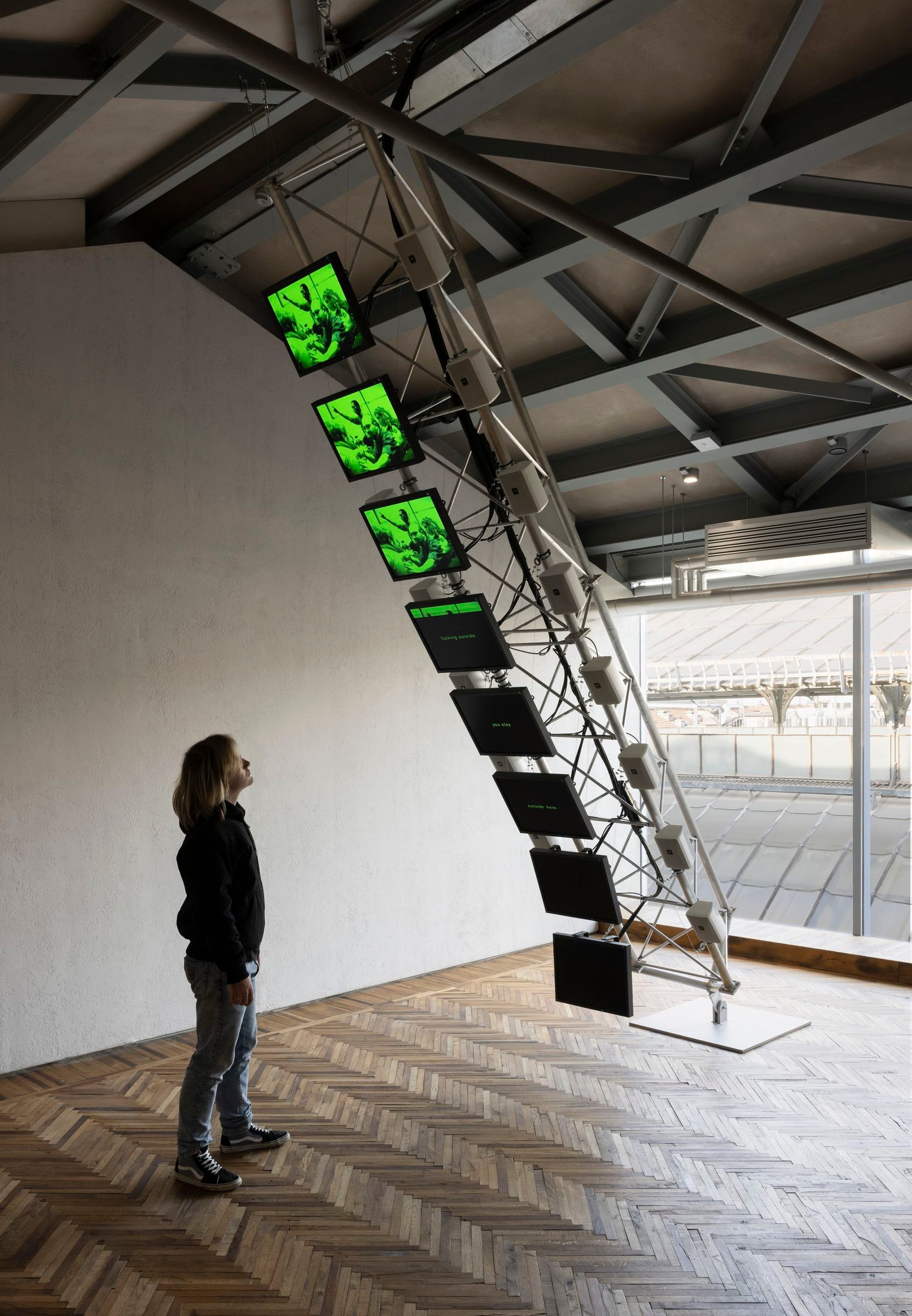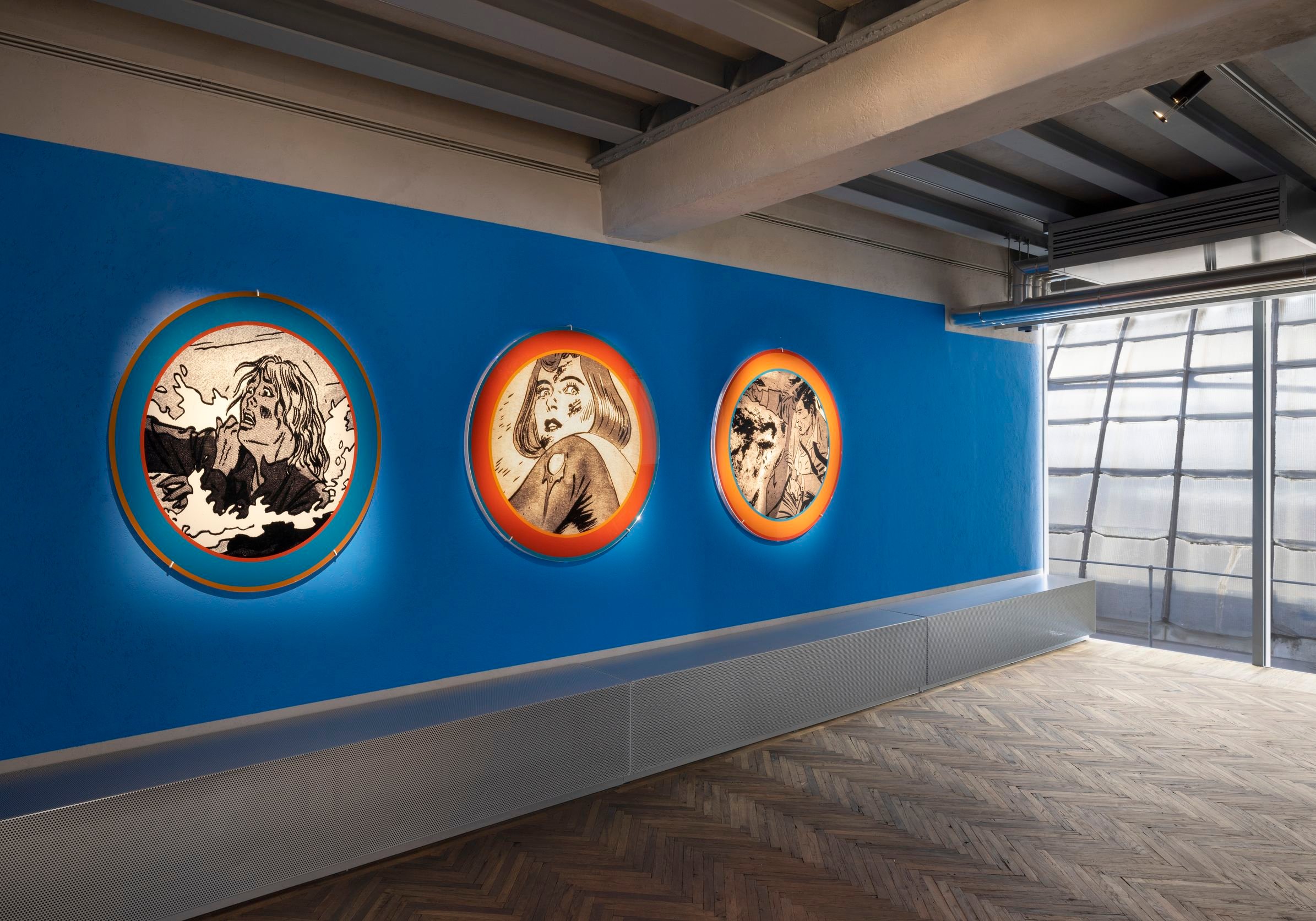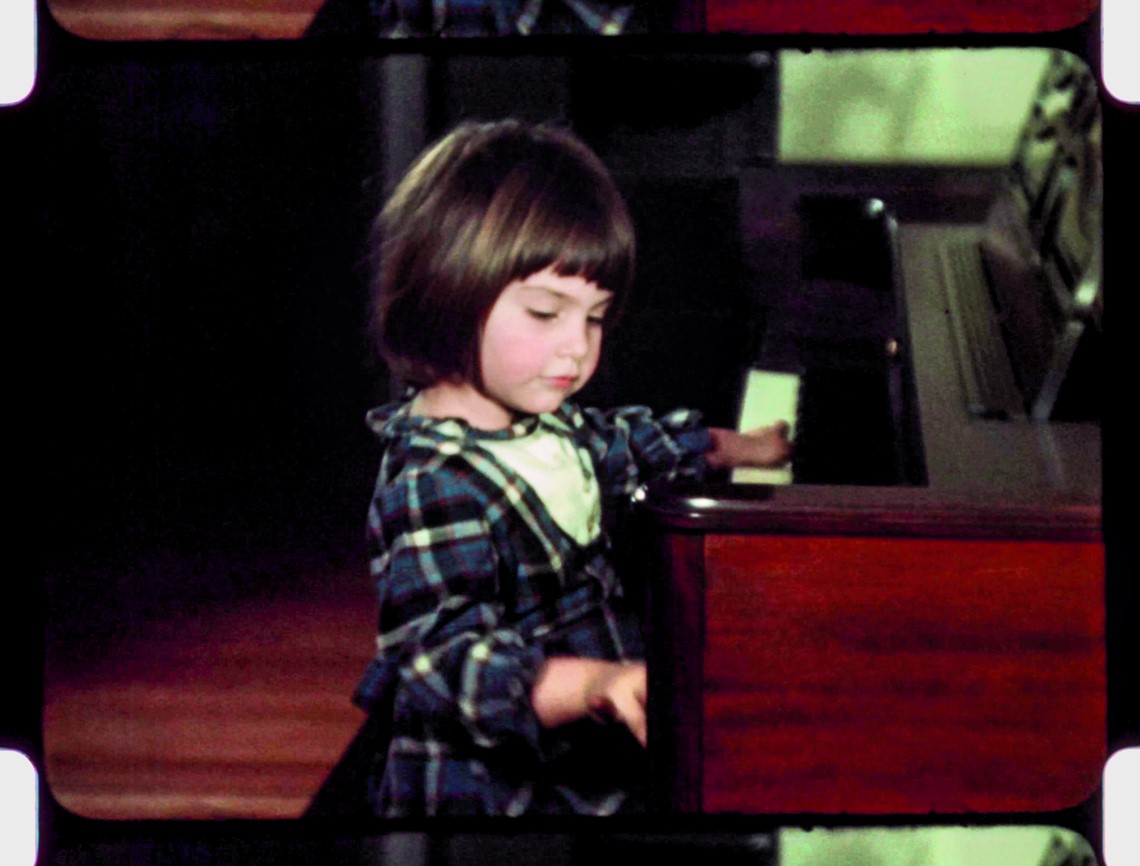Media criticism and Dara Birnbaum’s feminist claims invade the rooms of the Prada Foundation Observatory on the rooftops of Galleria Vittorio Emanuele II
The video artist Dara Birnbaum (New York, 1946) focuses on images and dialogue from television channels and the media, and stigmatizes the mass media’s control over the flow of information. His work frames, focuses, classifies, and disrupts the narratives of television programs and uses the same language on cable television. The artist has been dealing with analog video since the seventies and over time he has remastered the original support with the frenetic technologies of digital modernization, resolving any technological imbalances that could neglect the essence of primary meaning and interpreting them with greater clarity to revitalize.

THE EXHIBITION AT THE PRADA FOUNDATION OBSERVATORY
The exhibition in the Observatory presents, in a sparse and austere framework, the diversity of languages used by the artist in the history of video development (in the United States, more than 300 cable channels were available by 2022, which were then surpassed). through TV streaming) and explore recurring themes such as i gender bias in popular culture, the treatment of female characters by the media who capitalist control Information flow also includes reports on the war in Iraq and Vietnam, combined with autobiographical videos that do not neglect Birnbaum’s passion for music and his childhood years in suburban landscapes.
The content will follow

DARA BIRNBAUM AND WOMEN’S RIGHTS
Birnbaum’s interest in women’s rights is clear from the video Technology/Transformation: Wonder Woman (1978-79), placed at the entrance next to the elevator with demonstrative disinterest: the protagonist is a scantily clad secretary who defends a man hiding during a shootout and becomes the heroine of the video. Shown on cable TV and not on TV wonder woman, and during the Guerrilla Girls Night at the Palladium in New York (Palladium will apologize to female artistsOctober 17, 1985), the video supports the group of feminist artists called guerrilla girlwhich fights sexism, male monopoly and racism in the art world.

THE WORKS OF DARA BIRNBAUM AT THE EXHIBITION IN MILAN
The only pictorial concession to the strict structure of the observatory of the Fondazione Prada are the three colored Plexiglas panes (silent catastrophe, 1999) in which many scared faces appear in Japanese anime style. Once removed from the original context, the idea of victim roleto show how simple screenshots can produce the collision tracked by the media.
The artist’s first videos (Six sets: Chaired Fears: Leaving, 1975) are silent exercises inspired by Vito Acconci’s videos, in which Birnbaum makes us think about the prejudices that weigh on women and the need to fight for gender freedom and freedom of thought.

CHILDHOOD AND AUTOBIOGRAPHY IN DARA BIRNBAUM’S VIDEOS
On the top floor, between the cold concrete walls reflected in the large windows, is a six-channel video installation (Voyage: Shadows of American Dreams, 2022) moves the investigation, using Birnbaum’s training in architecture for a urban reflection Critique of American Culture After World War II: Shows what it was like to grow up in the shadow of the “Great American Dream” after the United States emerged victorious from the conflict. Building opportunities flourished, turning the suburbs into conglomerates of prefabs and skyscrapers. Inside these fences Families annihilated in front of the televisionwhere the schedules were full of talk shows, Cartoons, western films, comedy and science fiction. The racial segregation denounced by Birnbaum in the video is mixed with footage (captured by the artist’s father) of his first steps, birthdays and family celebrations, opening the doors of middle-class American families’ homes and urging the viewer to reconsider the “impact” of memories that structure memory and, driven by the manipulative communication of the media, can lead to incorrect prefigurations of the present.
Christine Zappa